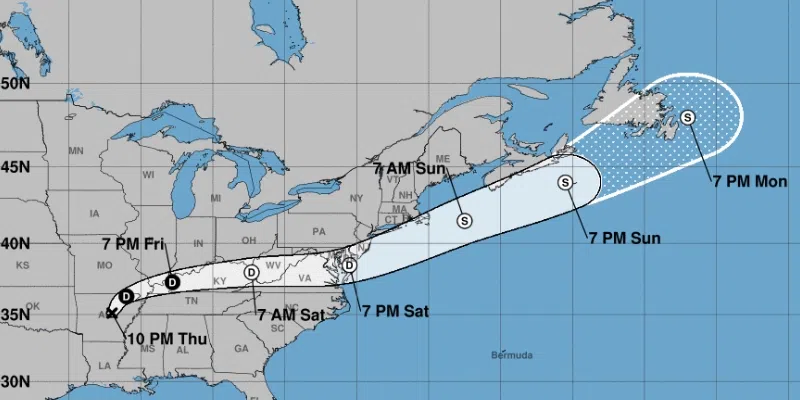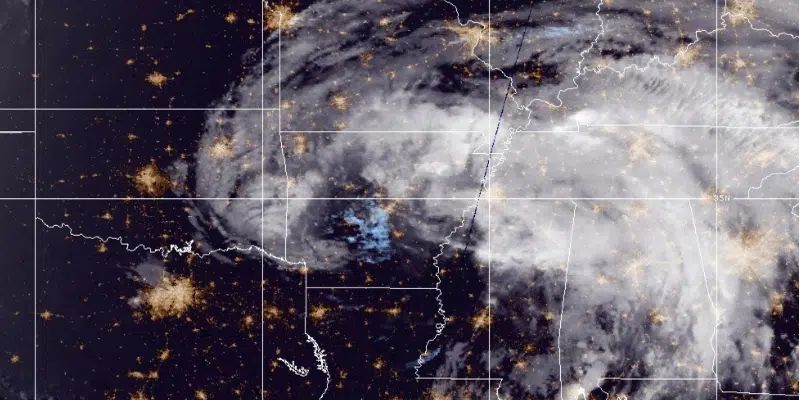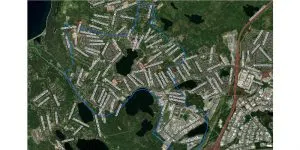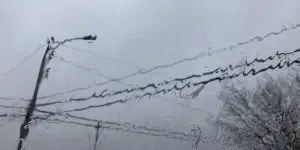The states of Louisiana and Texas are cleaning up the destruction left behind in the wake of Hurricane Laura, and while she won’t be packing near as much of a punch when she reaches Atlantic Canada, the storm will have an impact.
Laura peaked as a category 4 hurricane, causing widespread destruction and death, including two fatalities in the United States.
It has since been downgraded to a tropical depression as it moves inland across the United States.

The updated track for Laura, courtesy of the National Oceanic and Atmospheric Administration
The storm is expected to turn to the east and make its way into Atlantic Canada for the weekend.
Environment Canada meteorologist Wanda Batten says today and tomorrow will be nice but things will become unsettled on Sunday.
Batten admits there is uncertainty in the forecast but believes the highest rainfall amounts will be in the eastern portion of the island, saying we could get a “good shot of rain.”
Batten says we will feel the impacts of Laura into Monday. The backside of the system will bring in some cooler winds, bringing temperatures to below seasonal, around 14 degrees or so.
The Power of the Storm and Laura’s Survival on Land

Dr. Athena Masson
Meanwhile, a hurricane expert who lives in Florida but spent time studying in this province, says how long Laura has survived on land is a testament to how powerful the storm was.
Dr. Athena Masson is a meteorologist with Florida Storms at the University of Florida.
She says the remnants of Laura are beginning to regain some speed and will soon be back over open water. What that means is the storm could restrengthen and become a tropical storm once again as it heads into our neck of the woods.
Masson explains that open water is a hurricane’s prime energy source, and once it hits land storms usually rapidly deteriorate within about eight hours. Laura is an exception.
She says it took 24 hours for the hurricane to degenerate into a tropical depression, which goes to show how powerful the storm was.
– First light is revealing the incredible damage #HurricaneLaura did here in #LakeCharles #Louisiana over night… #Laura #CapitolOneTower pic.twitter.com/WSlP0MIZ0K
— WeatherGoingWILD (@WeatherGoinWILD) August 27, 2020























